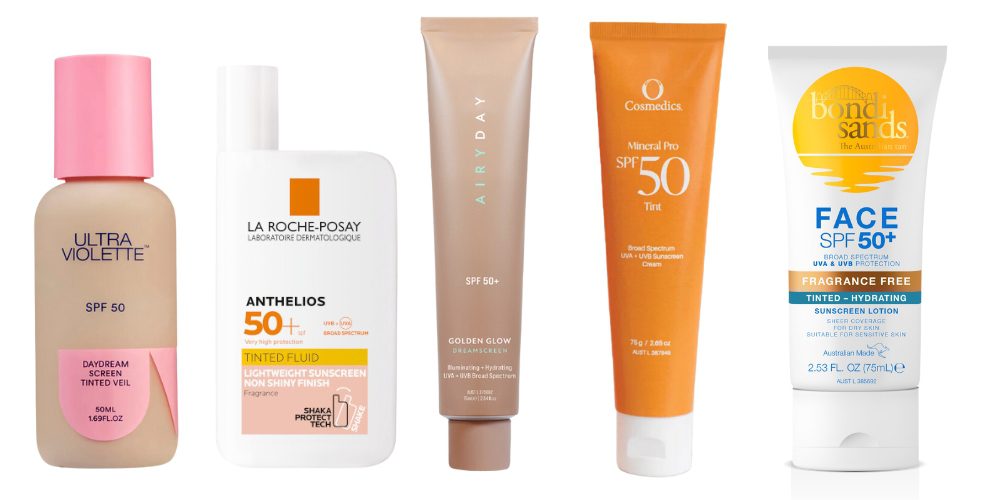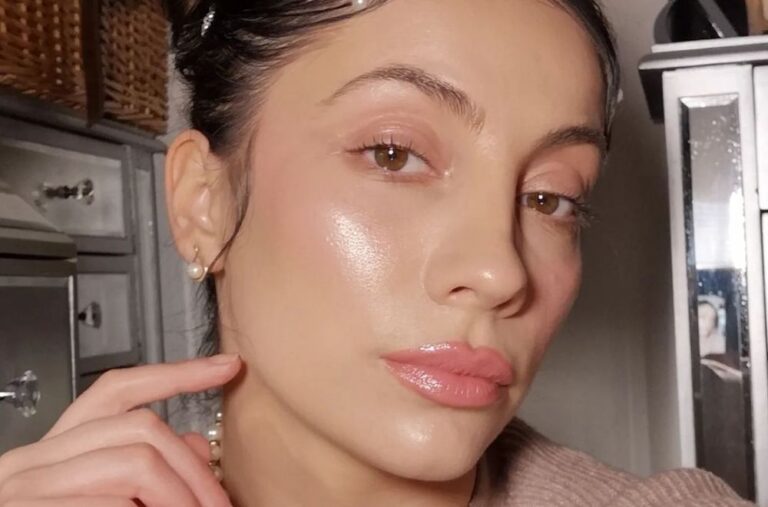As a beauty editor, I’m used to being sought out by friends and family for recommendations on products that work well and tips on those that don’t.
This time of year, the queries all relate to to one topic: SPF. This year in particular, there’s been an influx of interest in tinted sunscreens.
With the relaxed nature of our lifestyles in summer with plenty of time spent outdoors, it makes sense many of us are looking for a product that will protect skin as well as give a tiny bit of colour and coverage. It allows those of us who usually layer SPF and makeup to do both in one step.
Or does it?
The problem with tinted SPF
Products on shelves where the primary purpose is to protect the skin from UV rays must meet Australia and New Zealand’s shared Sunscreen Standard, AS/NZS 2604. This standard specifies safety, testing methods and labelling requirements, intended to ensure sunscreen’s efficacy to at least the SPF listed on packaging.
So if you’re reaching for a tinted SPF 50, you’ll be well protected right?
The problem is, to meet the standard, a specific amount of product is used in testing, That amount varies and you’ll need to seek out instructions on each product, but usually it can amount to between 1/4 and 1 teaspoon of the product for an area the size of your face.
It’s easier to douse our skin in a clear or white product that sets sheer. But when a product is tinted, many people apply it sparingly, far less than the amount needed to meet the protection claim on the bottle.
There is temptation to use it as you would a makeup product, by dabbing on in certain areas like the cheeks and chin. This means much of your skin may be left vulnerable to damaging UV rays that can result in signs of aging like lines, wrinkles, and pigmentation, not to mention the significant risk of developing skin cancer.

Tinted SPFS: Ultra Violette Daydream Screen SPF50 Tinted Veil; La Roche Posay Anthelios Tinted Fluid SPF 50+; Airyday Golden Glow Dreamscreen SPF 50+; O Cosmedics Mineral Pro SPF 50 Tinted; Bondi Sands SPF 50+ Fragrance Free Hydrating Tinted Face Lotion
Popular SPF brand Ultra Violette faced this issue when it launched its Daydream Screen SPF50 Tinted Veil that has a tint akin to foundation. It now specifies on the brand’s website it should be used as a ‘secondary sunscreen’ to ensure production is achieved.
“If you’ve ever seen what it looks like to apply the recommended 1/4 teaspoon of product to get the proper SPF protection, you’ll know that it’s a lot (like A LOT, a lot!) of makeup and definitely wouldn’t result in the fresh-faced finish you’re going for,” Ultraviolette’s website states. “We’ve considerately designed Daydream as a secondary sunscreen that sits snugly over your dedicated SPF so you can get away with wearing less SPF than you normally would.”
The other issue with a tinted SPF is that people are less likely to re-apply a tinted version when necessary. To protect yourself you should be re-applying SPF liberally every two hours.
How to use tinted SPF
So how to ensure you’re protected?
It sounds finicky, but you could use an actual measuring spoon to ensure you’re applying enough, as specified on packaging.
After cleansing and moisturising, spread well over your skin and blend well, paying attention to areas like ears, eyebrows and around the nose that are commonly missed. With SPF, you want to make sure you’re evenly coating every part of your face and neck.
Ensure any colour is well distributed and doesn’t catch in the hairline or eyebrows, but avoid using a cotton bud or wipe to clean them up, or you may not be adequately protected in the area.
If you’re going to be out in the sun and you’re worried, you can always apply a regular SPF and once it is dry, apply a touch of the tinted version over top.
Sun Protection tips
Don’t forget, sunscreen is only one part of effective sun protection and you should always avoid prolonged sun exposure, and cover up with clothing, hat and sunglasses when outside.
The Cancer Society of NZ recommends:
- Use sunscreen every day on days when the UV Index is forecast to be 3 or above. This information is reported by your weather provider.
- Look for sunscreens with an SPF of 30 or above, plus water resistance and broad-spectrum protection.
- Apply sunscreen at least 20 minutes before going outside.
- Reapply sunscreen every two hours or after being in water or sweating.
The average sized adult should apply 1 teaspoon to each arm, and to the face (including the ears and neck); and at least a teaspoon to each leg, the front of the body, and the back of the body. That’s 7 teaspoons for a full-body application. - Mopping up sweat or using a towel after swimming can impact protection, even water resistant products, so make sure you reapply afterwards.







